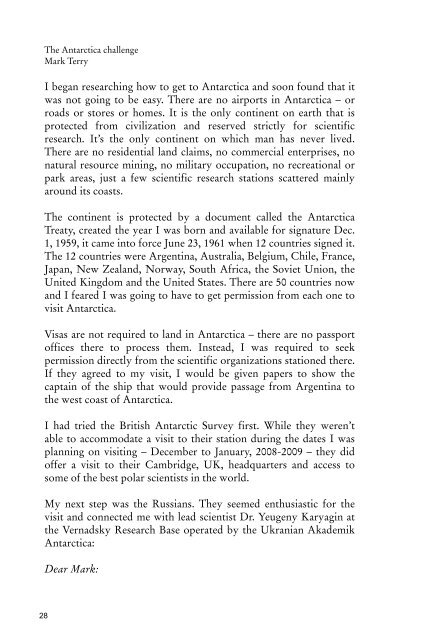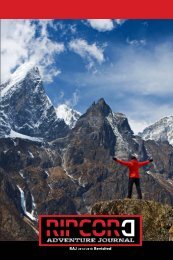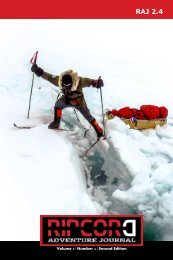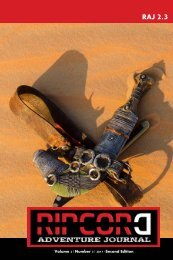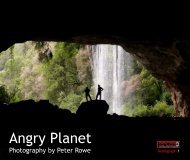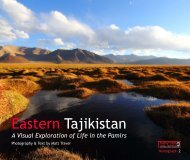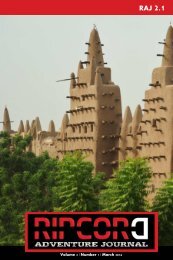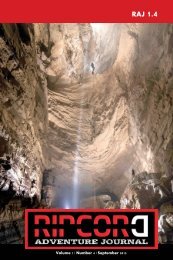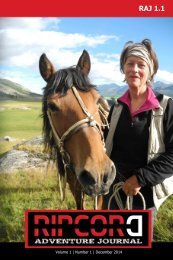Ripcord Adventure Journal 1.3 Second Edition
We begin this issue with a call to adventure from Bear Grylls' Mission Survive expedition and survival expert Megan Hine which is followed by a filmmaking expedition to the icy desert of Antarctica. Our writers have crossed the Himalaya and have cycled around the world to make sure it is indeed round. We hear of legendary explorer John Rae and venture to Kilimanjaro to witness a high altitude rescue. Brought to you by the crew at World Explorers Bureau and Ripcord Travel Protection
We begin this issue with a call to adventure from Bear Grylls' Mission Survive expedition and survival expert Megan Hine which is followed by a filmmaking expedition to the icy desert of Antarctica. Our writers have crossed the Himalaya and have cycled around the world to make sure it is indeed round. We hear of legendary explorer John Rae and venture to Kilimanjaro to witness a high altitude rescue. Brought to you by the crew at World Explorers Bureau and Ripcord Travel Protection
Create successful ePaper yourself
Turn your PDF publications into a flip-book with our unique Google optimized e-Paper software.
The Antarctica challenge<br />
Mark Terry<br />
I began researching how to get to Antarctica and soon found that it<br />
was not going to be easy. There are no airports in Antarctica – or<br />
roads or stores or homes. It is the only continent on earth that is<br />
protected from civilization and reserved strictly for scientific<br />
research. It’s the only continent on which man has never lived.<br />
There are no residential land claims, no commercial enterprises, no<br />
natural resource mining, no military occupation, no recreational or<br />
park areas, just a few scientific research stations scattered mainly<br />
around its coasts.<br />
The continent is protected by a document called the Antarctica<br />
Treaty, created the year I was born and available for signature Dec.<br />
1, 1959, it came into force June 23, 1961 when 12 countries signed it.<br />
The 12 countries were Argentina, Australia, Belgium, Chile, France,<br />
Japan, New Zealand, Norway, South Africa, the Soviet Union, the<br />
United Kingdom and the United States. There are 50 countries now<br />
and I feared I was going to have to get permission from each one to<br />
visit Antarctica.<br />
Visas are not required to land in Antarctica – there are no passport<br />
offices there to process them. Instead, I was required to seek<br />
permission directly from the scientific organizations stationed there.<br />
If they agreed to my visit, I would be given papers to show the<br />
captain of the ship that would provide passage from Argentina to<br />
the west coast of Antarctica.<br />
I had tried the British Antarctic Survey first. While they weren’t<br />
able to accommodate a visit to their station during the dates I was<br />
planning on visiting – December to January, 2008-2009 – they did<br />
offer a visit to their Cambridge, UK, headquarters and access to<br />
some of the best polar scientists in the world.<br />
My next step was the Russians. They seemed enthusiastic for the<br />
visit and connected me with lead scientist Dr. Yeugeny Karyagin at<br />
the Vernadsky Research Base operated by the Ukranian Akademik<br />
Antarctica:<br />
Dear Mark:<br />
28


